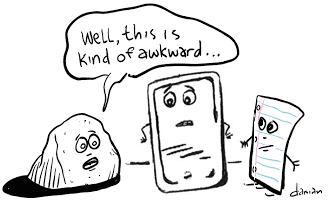 A scientific look at how printed marketing materials make good sense to our brains.
A scientific look at how printed marketing materials make good sense to our brains.
As our brains get used to working on screens and in digital, does print still have a place? According to current scientific research, absolutely.
In InkOnDaPaper, writers Brian Szubinski and Jason Shudy break down the results of a recent Canada Post study that aimed to evaluate the impact of print direct mail versus digital media.
“The technologies used in this study were eye-tracking and high resolution EEG brain wave measurement. Conventional questionnaires were also used,” the writers note. “The three key metrics evaluated in the study were cognitive load (ease of understanding), motivation (persuasiveness), and attention (how long subjects looked at the content).”
The study showed that printed direct mail “requires 21% less cognitive effort to process than digital media (5.15 vs. 6.37), suggesting that it is both easier to understand and more memorable,” with 70% higher recall with print over digital.
Interestingly, scented envelopes showed the highest recall, with dimensional mailers not far behind. Perhaps the involvement of more than one sense helps the brain process and remember, giving print marketing the edge.
The results dovetail with other scientific studies in recent years on recall, comprehension and the way our brain processes print.
The takeaway?
“Science clearly shows paper can be more impactful and memorable than digital. Digital, meanwhile, offers its own huge advantages, including instantaneous access, localization, powerful personalization and targeting, audio and video, and more,” the article notes.
Strategic use of print in our marketing campaigns can clearly help brands looking to make an impact.
Rock, paper, scissor and digital…sounds like we can call coexist in the multi-channel world.
